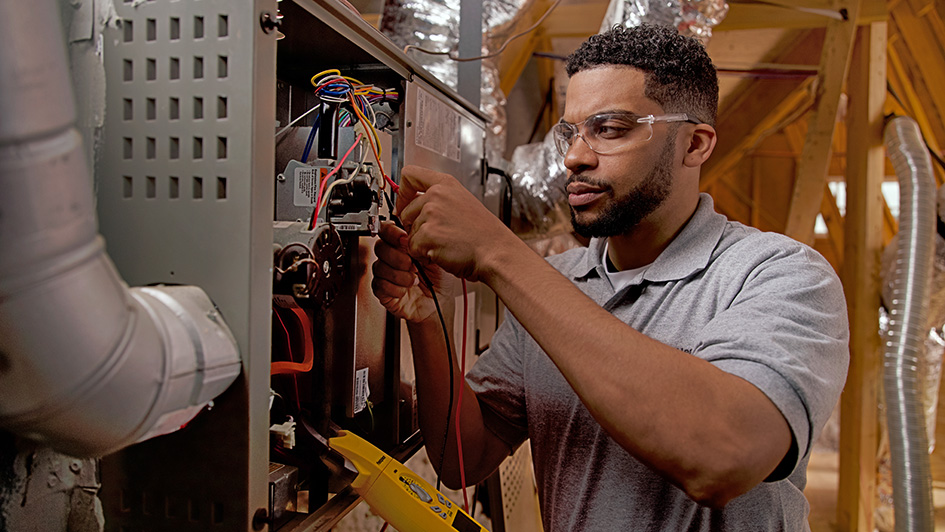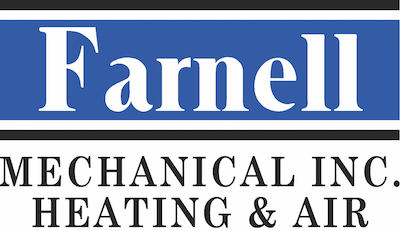
A furnace is usually a background player for your home, ensuring you're warm in the cold winter months. It frequently won't be noticed until something goes wrong.
One root cause might be that your furnace has a cracked heat exchanger. It can be a safety risk, so it’s worthwhile to familiarize yourself with the signs of a cracked heat exchanger and what you should do if you believe that may be the problem.
What Is a Heat Exchanger in a Furnace?
A heat exchanger transfers heat from the combustion chamber inside your furnace to the air that flows throughout the system. It usually handles this via coils or tubes that heat up the air while acting as a barrier to keep the gasses produced in the combustion chamber, called flue gasses, from getting out into your home.
Is a Cracked Heat Exchanger Dangerous?
Thanks to its key role, it’s no surprise that a damaged heat exchanger can be very dangerous. A crack in the heat exchanger can enable dangerous gasses – including carbon monoxide, which can be lethal – to circulate throughout your home.
For that reason, do NOT use your furnace if you suspect there's a crack in the heat exchanger, as this could make your entire family ill. Reach out to an HVAC professional right away if you are worried your furnace has a cracked heat exchanger that needs to be repaired.
Four Warning Signs of a Cracked Heat Exchanger:
- Furnace shuts off: Cracks in the heat exchanger could cause your furnace to turn off.
- Odd Smells: If the air escaping your furnace has a powerful chemical smell, it may be evidence gas is seeping through cracks in your heat exchanger. These gasses, which can smell like formaldehyde, are a common warning sign.
- Carbon monoxide alarm goes off or you notice symptoms of poisoning: If a cracked heat exchanger is releasing carbon monoxide inside your home, your carbon monoxide alarm could go off or family members could start experiencing signs of carbon monoxide poisoning. Symptoms include headaches, dizziness, weakness, nausea, vomiting or feeling tired. If an alarm goes off or you feel sick, get out of the home as soon as you can and then call for help.
- Soot: If you find black sooty buildup around the exterior of your furnace, it’s an indication something may be seriously wrong.
What You Should Do if Your Furnace Heat Exchanger is Cracked
If you suspect your furnace has a cracked heat exchanger, contact a professional experienced in furnace installation Auburn and Opelika right away so they can examine your system and, if needed, handle a furnace heat exchanger replacement. Costs should differ depending on the situation, but estimates can roughly suggest $1,000 to $3,000.
However, the good news is that heat exchangers are regularly protected by the warranty. You should confirm the warranty paperwork on your furnace, as while the warranty may not cover the entire cost of repairs, it could significantly reduce your bill.
How to Prevent a Cracked Heat Exchanger in Your Home
One of the easiest ways to avoid problems in your furnace overall is via regular furnace maintenance. Furnaces offer the most benefits when they operate efficiently. Contacting a trained professional to check your furnace for worn-out parts, clogged filters and other potential problems can keep you from getting a big bill later on.
It’s also helpful to take a look at your furnace filters every few months – it’s encouraged some filters be replaced every 90 days or sooner if they are dirty or grimy. While the filters are not part of the heat exchanger itself, the strain of dragging air through a clogged filter makes the entire furnace work more vigorously to do its job. And the harder your furnace has to work, the more wear and tear parts like the heat exchanger will sustain.
